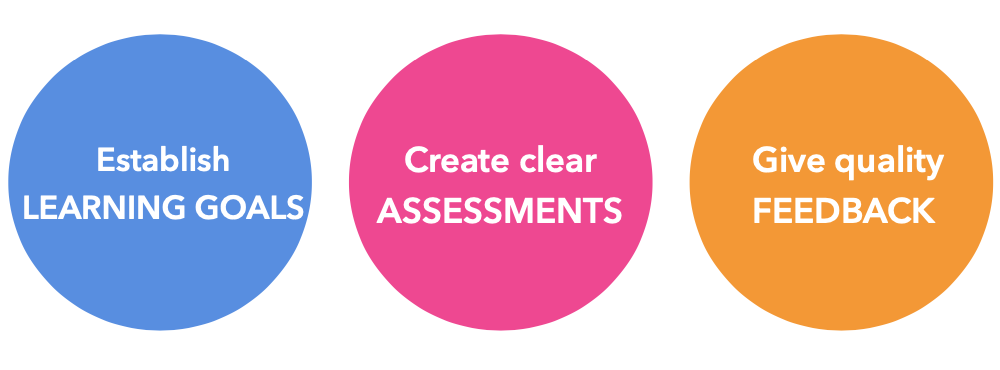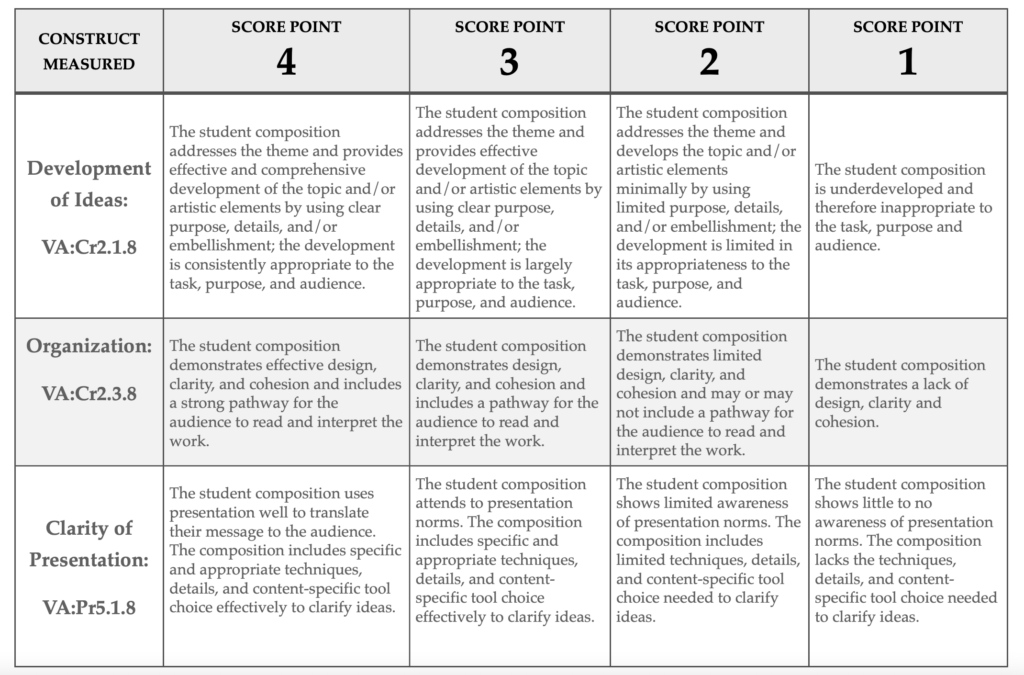JOIN US FOR THE 2025 ARTS INTEGRATION & STEAM CONFERENCE – LEARN MORE
One of the concerns many educators have – especially those who are dipping their toes into arts integration – is in how to authentically assess an arts integrated lesson if they are not an expert in the other content area. This can be a concern for both classroom teachers (about the arts content) and arts educators (who may feel intimidated by the classroom content). How can you assess students in a topic area where you are unfamiliar?
This is why using Standards Based Grading is so important. It makes an arts integration or STEAM lesson easier to assess. It also can be done as a quick and efficient process. This will make your conversations with students richer and make collaboration with your colleagues more meaningful.
What is Standards Based Grading?
Standards-Based Grading (SBG) is an approach to assessment that focuses on the content, skills and standards students must learn. Here’s a few other distinctions:
- The focus of SBG is on a student’s mastery of a standard, NOT a cumulative grade.
- This means that students are being assessed based upon their level of work towards meeting a standard. This provides a snapshot of students’ learning of each standard discreetly, rather than just in one lump grade at the end of a unit.
- Additionally, intangibles that are not distinctly a part of the standard (time in class, effort, participation, etc) cannot be included in the grade.
Why Should We Use SBG?
Standards-Based Grading is meant to help provide alignment in the learning cycle. This creates many benefits including:
- Higher quality feedback
- Student participation in the assessment process
- Streamlining the Student Learning Objectives/Student Growth Objective Process
This creates a natural cycle of clear learning goals, assessments aligned to those goals and providing authentic, actionable feedback.
Examples of Standards Based Grading
There are lots of ways this approach can look in your classroom. One of the most effective tools I have found for Standards Based Grading is this chart:
This is a great tool to put up in your classroom where students can see it at all times. It helps them to think about their own understanding, ask for help when they need it, and to give everyone a common framework for their efforts.
What Does This Mean for the Arts?
Using Standards Based Grading for both Arts Classrooms and Arts Integration/STEAM efforts can be a very effective way of measuring growth. Here’s why:
- There is a bigger focus on using standards as the base for assessing student process and product.
- Detailed levels of proficiency and mastery must be established. This leads to students understanding what each level looks like so they can strive for their best work.
- Standards-based grading requires SMART writing! Specific, Measurable, Achievable, Relevant, and Time- Bound. This provides clarity and leads to more confidence (both from the student working on the outcome and the teacher doing the grading).
- It provides an opportunity for arts educators and classroom teachers alike to think through how to provide differentiation with a valid scale of measurement.
The SBG Development Process
There is a process for designing an effective Standards-Based Grading model for your school. This is based on Steven Covey’s “Begin with the End in Mind” habit. You’ll want to start with the what and then backward map into the how.
1. Start with a Scale
Need a place to start? Try using this scale for your next assessment:
This provides an example of how to align scores on an assessment with the outcome we’re looking for from students.
2. Develop a Series of Topics
Once you have the scale you want to use, now it’s time to consider what standards you want/need to cover.
Combine your standards into a series of topics – use the elements and anchor standards to help you!
- Start with level 3: what do complex skills/ideas do your students need for each topic?
- Backwards map to level 2: what foundational skills will be needed to achieve a 3?
- Once you have your standards grouped into topics, then move into teaching each topic in progression. This then builds students toward mastery.
Here’s what this looks like in action with a 5th grade Drumming Unit:
You’ll notice that there’s a Core Goal that you want all students to achieve which is aligned to a standard. To provide differentiation and room to grow, there’s also an Intermediate Goal and an Advanced Goal.
From there, we’ve identified and aligned the skills needed for students to meet those goals and standards.
3. Create Your Assessments
Now it’s time to finally create the assessments you’ll use for each topic of study. Here’s how:
- Create your rubrics or questions in advance. Reference your topic organization and original standards.
- Be sure to look for your VERBS. Analyze, Create, Perform, etc in an assessment. This will require that you teach your students how to do these things!
Here’s a sample of what a visual art assessment looks like in SBG:
Standards Based Grading is a great way to provide opportunities for differentiation and offer a bigger focus on using standards as the base for assessing student process and product. It can also finally allow students to take a key role in their own assessment. Together, we can work towards understanding a complete picture of student learning.









